Please see the explanation of each historical site by number.
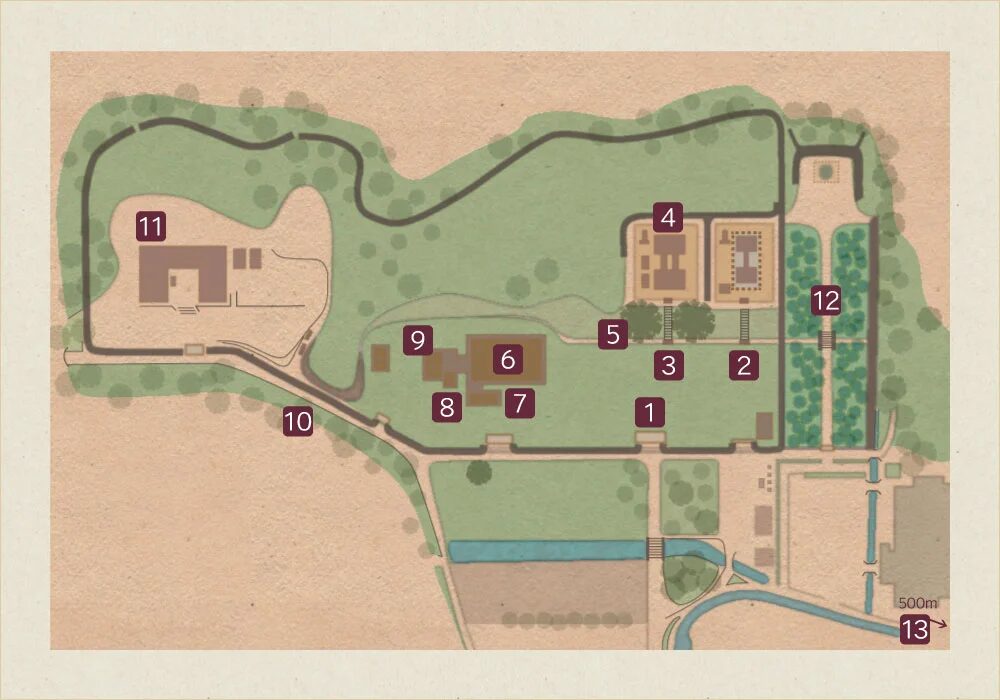
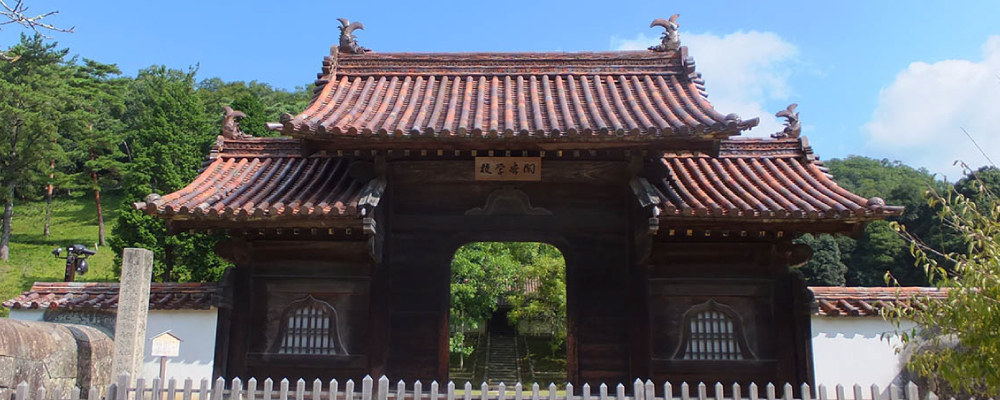
This is main gate of Shizutani school and it is located at the middle between the stone bridge on Hanchi pond and Seibyo( Sacred Hall which is dedicated to Confucius).
The roof is tiled with Bizen ware kawara(tiles) and Shachihoko( traditional kawara, shaped as fabulous fish with a tiger head ) is decorated to the roof-ridge.
At the west of Komon( School gate ), there is Kumon (Onarimon) for local lord’s visit, there are also Inshitsumon( Gate of tea break room ) and Kochumon( Gate of school kitchen ) that are used by students, and those gates are graded by user respectively.
At the east of Komon( School gate ),
there is Jinjamon( Shrine gate ) which was built after Meiji era had started.

The school founder Ikeda Mitsumasa is enshrined here.
This shrine was originally called as “Higashi-Mido( East Shrine )” or “Horetsu-Shi( Horetsu shrine )”.
Because Mitsumasa’s Okurina( Honorific title after his death ) was Horetsu-Ko( Duke Strong flavor ).
There is a gilt bronze seated statue of Mitsumasa enshrining in Honden( the main hall ) as Goshintai( worship symbol ).
The printed pattern of eaves-end tile is swallowtail butterfly, the family emblem of the Ikedas.
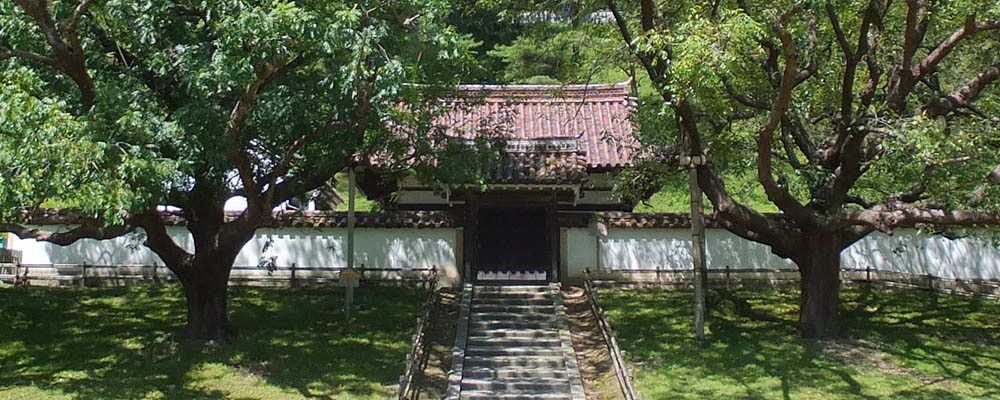
his is also called as Koshibyo( Confucius hall ) or Nishimido( West Shrine ) and located at the highest place as the most important facility.
The statue of Confucius is enshrined in innermost Taiseiden( Main Hall ). And the ceremony named “Sekisai” is held on the 4th Satuaday of every October to extol the virtues of Confucius, founder of Confucianism.
The eaves-end tiles don’t have emblems.
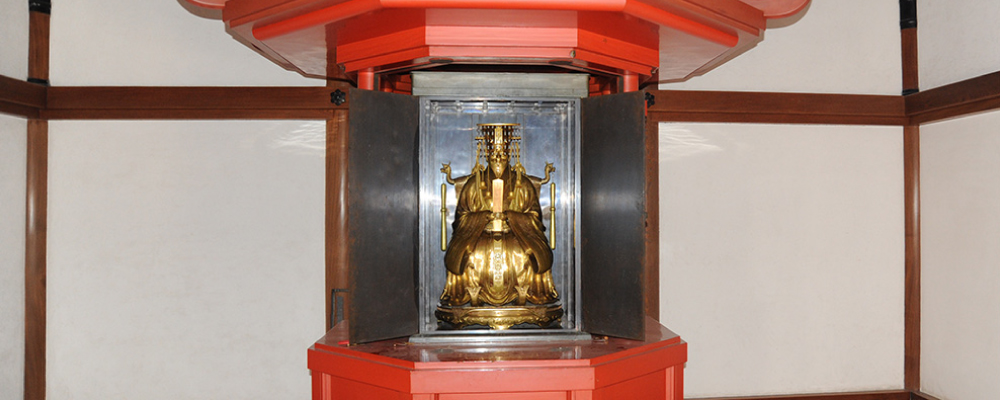
This is a gilt bronze statue which was cast by a famous craftsman lived in Kyoto. Neo-Confucianism scholar Nakamura Tekisai requested the craftsman to make it in accordance with the delegation of Okayama province.This is a statue sitting on the chair, and it’s 90 cm height and it is enshrined in the octagonal, vermilion-lacquered special case named Seigan.
At the innermost Taiseiden(Main Hall), statue of Confucius is enshrined. And the ceremony named as “Sekisai” is held on the 4th Satuaday every year to honor virtue of Confucius, founder of Confucianism .
This statue is specially opened 6 times every year, including Yomihajime( first reading of the year ) on January 4 and Sekisai( see above ) on the 4th Satuaday of October.
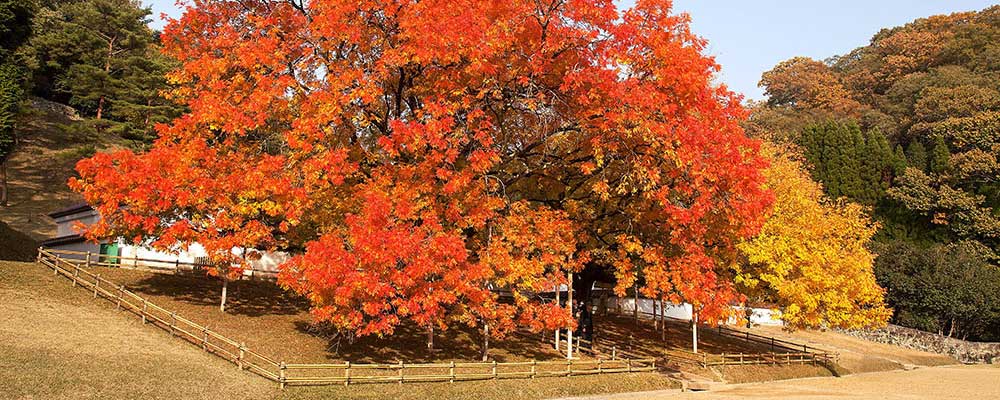
Both of 2 trees planted in front of “Seibyo” are one of some seedlings which had been grown from seeds brought from Korin(graveyard of Confucius family) of Shandong, China.
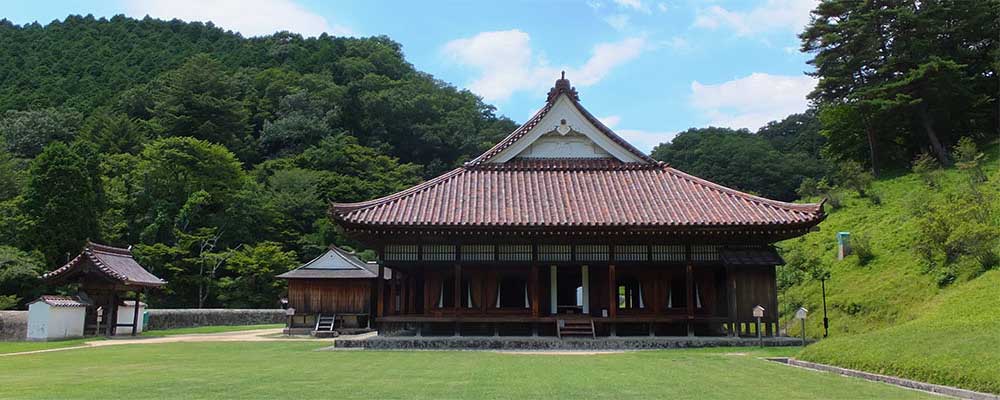
Lecture Hall is representative symbolic building of Shizutani school as the central place of learning.
Irimoyazukuri( Japanese building with half-hipped roof ), big roof by Shikorobuki( three layer structure consisting of layer shingled by thin boards, layer by japanned boards and layer by Bizen ware tile ) and Katomado( bell-shaped window ) look majestic and unique.
The roof was simple “thatched type” at the of the school. Then it was tiled by robust “Bizen ware tile” through subsequent renovations as same as the present style.
The roof consists of three layers structure protected from rainwater by every measures including pottery pipes of edge of the eaves.
Pattern of eaves-end tile is “Rokuyomon( Crest of 6 leaves).
This hall has blow-by vast room inside, and it consists of the room supported by 10 zelkova round columns and surrounding canopies.
The floor by Urushibuki(*) boards is thoroughly polished, then it softly reflects natural light which is come from Katomado( see above ).
(*): Japanning technique repeating the following procedure several times :
1)japanning 2)wiping 3)drying 4)polishing
“Sadame( National treasure ): School regulation” and “Shubunkogakuki : Basic principles of education established by Chu Hsi” are displayed on the front wall, and the framed calligraphy with “Kokumeitoku” written on it is hung on the east wall.
On both 1st and 6th day of each month, lecture of “Shishogokyo :Four Books and Five Classics of Confucianism” was given here.
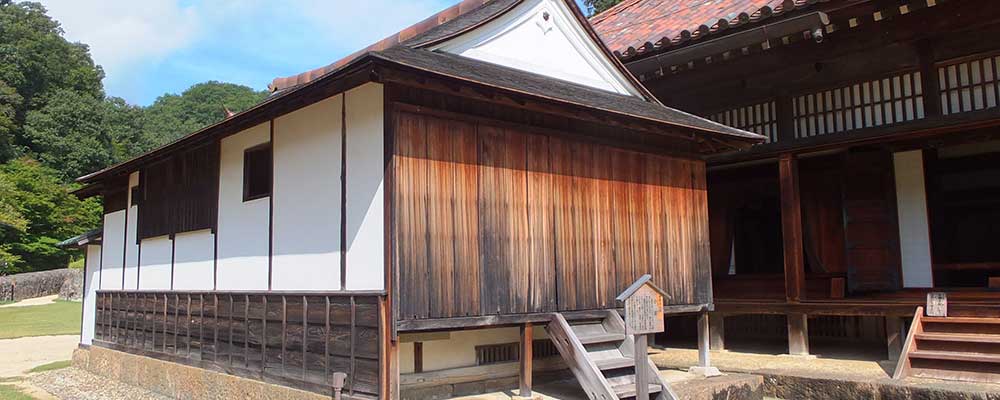
This is the building from which the local lord checked students learning at Lecture Hall.
Only this building has shingle roof here, and it was built as simple Sukiya(Teahouse) style.
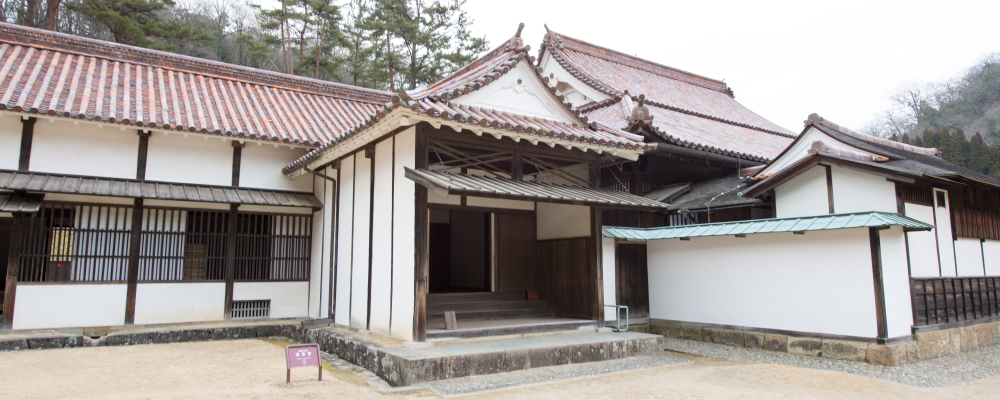
This is an attached building which was used as a classroom.。
This building is humble compared to Lecture Hall and it’s mainly made of pine.
On the dates that include the numbers 3 or 8 in each month, the lecture of “Gokyo : Five classics of Confucianism” and “Syogaku : Moral and Manner compiled by Chu Hsi” was given here.
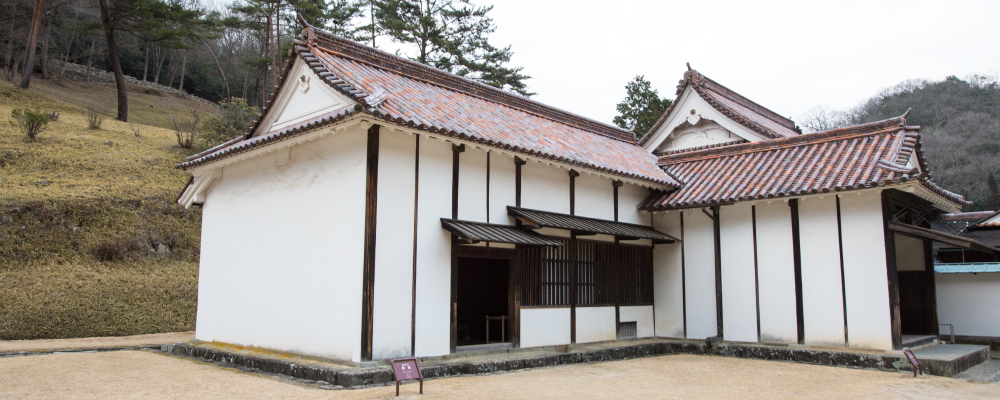
This was a tea break room for teachers and students, at the central area there is a Irori(fireplace) which was made of hollowed monolith.
On the edge of Irori, note of caution was carved as “Don’t make a fire using any materials except charcoal.”
Such effort to prevent fires had been kept, and therefore the room inside has not been blackened by soot at all.
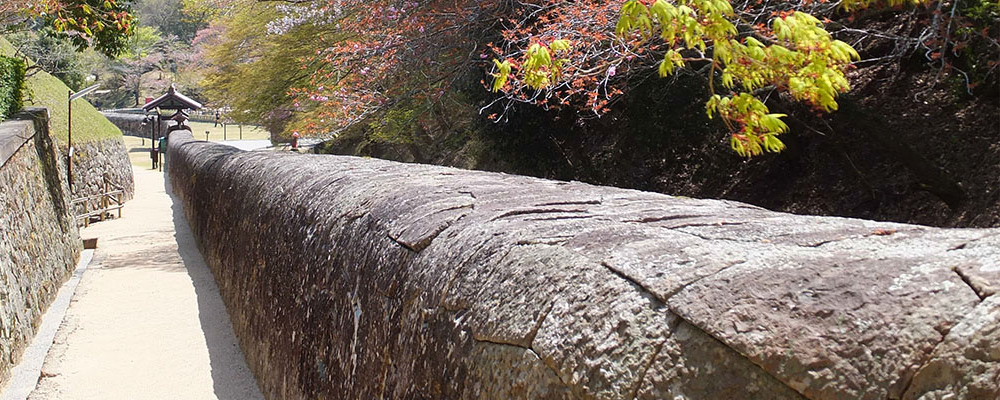
The stone fence that surrounds whole of the school stretches to 765m.
There is not so many similar stone fences in Japan.
Therefore not only Bizen ware tiles but also the stone fence create the distinctive appearance here.
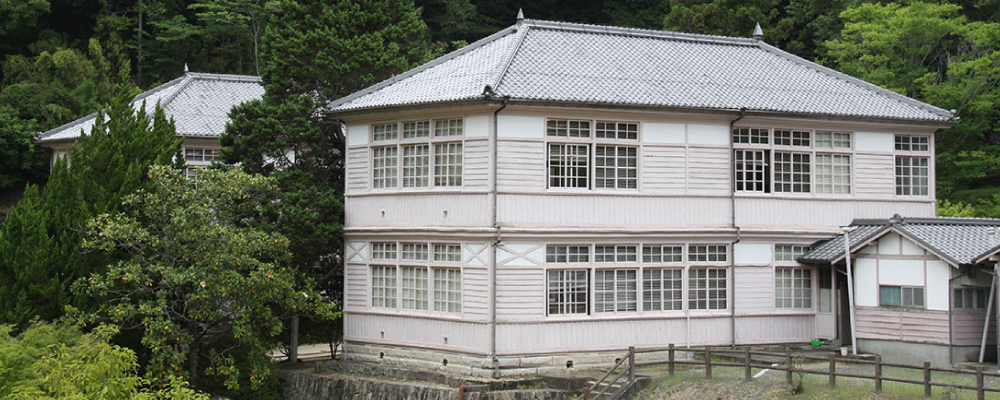
This Museum was built on the site of the dormitory in 1905( Meiji 38th ) as a private junior high school.
From then, It had been used as a school building until 1964( Showa 39th ).
After that, Shizutani School, Okayama Youth Education Center was established, and it had been used until 1991( Heisei 3rd ), then it has been used as Museum since 1995( Heisei 7th ).
This is a building designed by Egawa Saburohachi, architect who came from Aizu province.
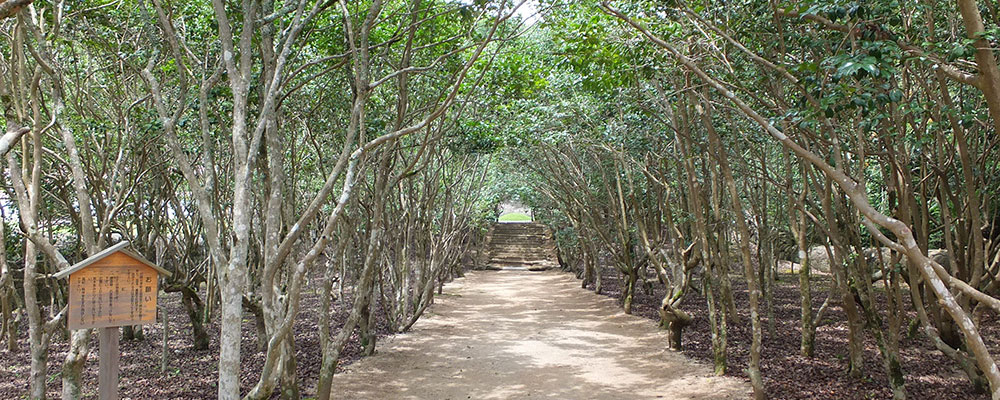
This is the hill to hold a memorial service for Ikeda Mitsumasa, called as “Gonassho”.
Some of his hair, nails and teeth were interred here.
Since camellia(japonica) was planted round about this place, it was called as “Tsubakiyama( Camellia Hill)”.
There are nearly 400 camellias(japonica) planted here.
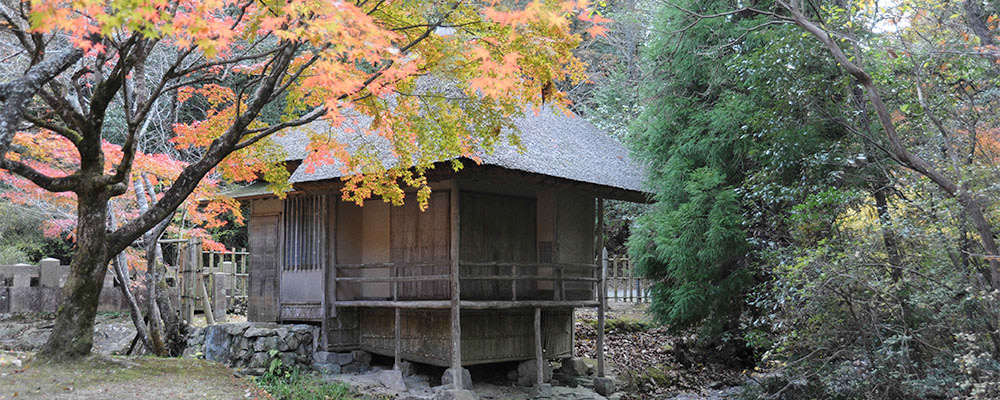
Koyotei is located about 500m, along Shizutani river. It was built in 1813( Bunka 10th ) as a tea house for hospitality to guests or for relaxation to school personnel and students.
It was also used as the place to contract a friendship with Confucian or cultured person who was invited there such as Rai Sanyo or Kan Chazan.
There is Tsuda Nagatada House in front of Koyotei.